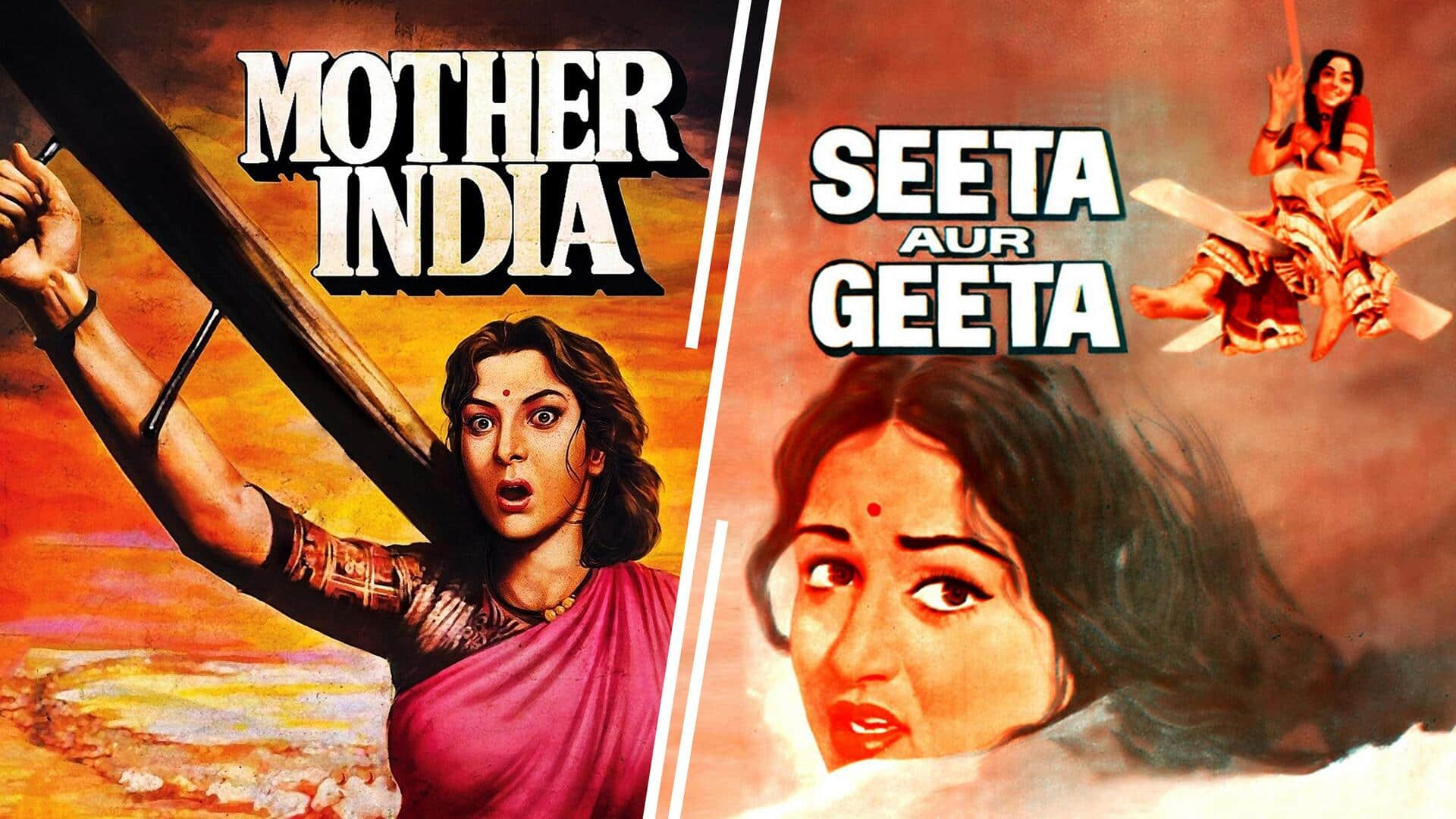
'Guide,' 'Mother India': How old Bollywood films championed strong women
What's the story
When it comes to representing women on the 70mm screen, Bollywood has existed in a somewhat mediocre terrain—neither completely hopeless nor overwhelmingly spectacular.
While it has often gained notoriety for relegating female actors to the fringes and limiting them to dancing, it has also tried to portray stories of women who break the glass ceiling.
This is particularly discernable through some classics.
Let's revisit.
#1
The earliest, seminal films in this category
One of the earliest films that championed women was Nargis's Mother India (1957)—about a woman who battles adversities in her husband's absence.
By not presenting her as a woman who would cease to exist sans a man, Mehboob Khan delivered one of the earliest lessons in female strength.
Also notable is 1956's Mem Sahib—about a woman who chooses her husband, defying her family's restrictions.
#2
'Sujata' and 'Guide' had important female characters
Though Bimal Roy's Sujata (1959) has a run-of-the-mill story, it broke barriers by circling the life of an untouchable woman, Sujata (Nutan).
Then, Vijay Anand's 1965 film Guide (based on RK Narayan's novel The Guide) showed Waheeda Rahman as Rosie, a woman who walks out of a toxic, troubling marriage.
Mohan Segal's Kanyadaan (1968), meanwhile, criticized child marriage and its repercussions for women.
#3
'Guddi' was a star vehicle for Jaya Bachchan
Female representation in films further evolved in the 1970s with Jaya Bachchan's Guddi (1971), focusing completely on a schoolgirl's life and not depending on the crutches of a male actor.
Also pivotal were Meena Kumari's Pakeezah (1972) and Hema Malini's Seeta Aur Geeta (1972).
The latter, in particular, was a breakthrough film with a career-defining role written for its lead, Malini.
#4
'Julie' broke ground, while 'Sholay' focused on supporting female characters
K. S. Sethumadhavan's Julie (1975) was courageous enough to deal with the societal barriers that dictate the rules of motherhood and inter-religious marriage.
Moreover, while Sholay (1975) rode high on testosterone, it also had a memorable role for Malini.
Then came Rajkumar Kohli's Nagin (1976) which presented Reena Roy in the lead as a femme fatale, thus allowing her to flex her artistic muscles.
#5
Quick overview of similar films in the 1980s
Subsequently, in the 1980s, the treatment of women went through another shift through movies such as 1983's Himmatwala (Sridevi's breakthrough in Hindi cinema), Mandi (Shyam Benegal's 1983 art film revolving around the life of women in a brothel that was led by a female ensemble), 1986's Nagina (featuring one of Sridevi's most iconic roles), and 1988's Khoon Bhari Maang (Rekha's solid female rage thriller).